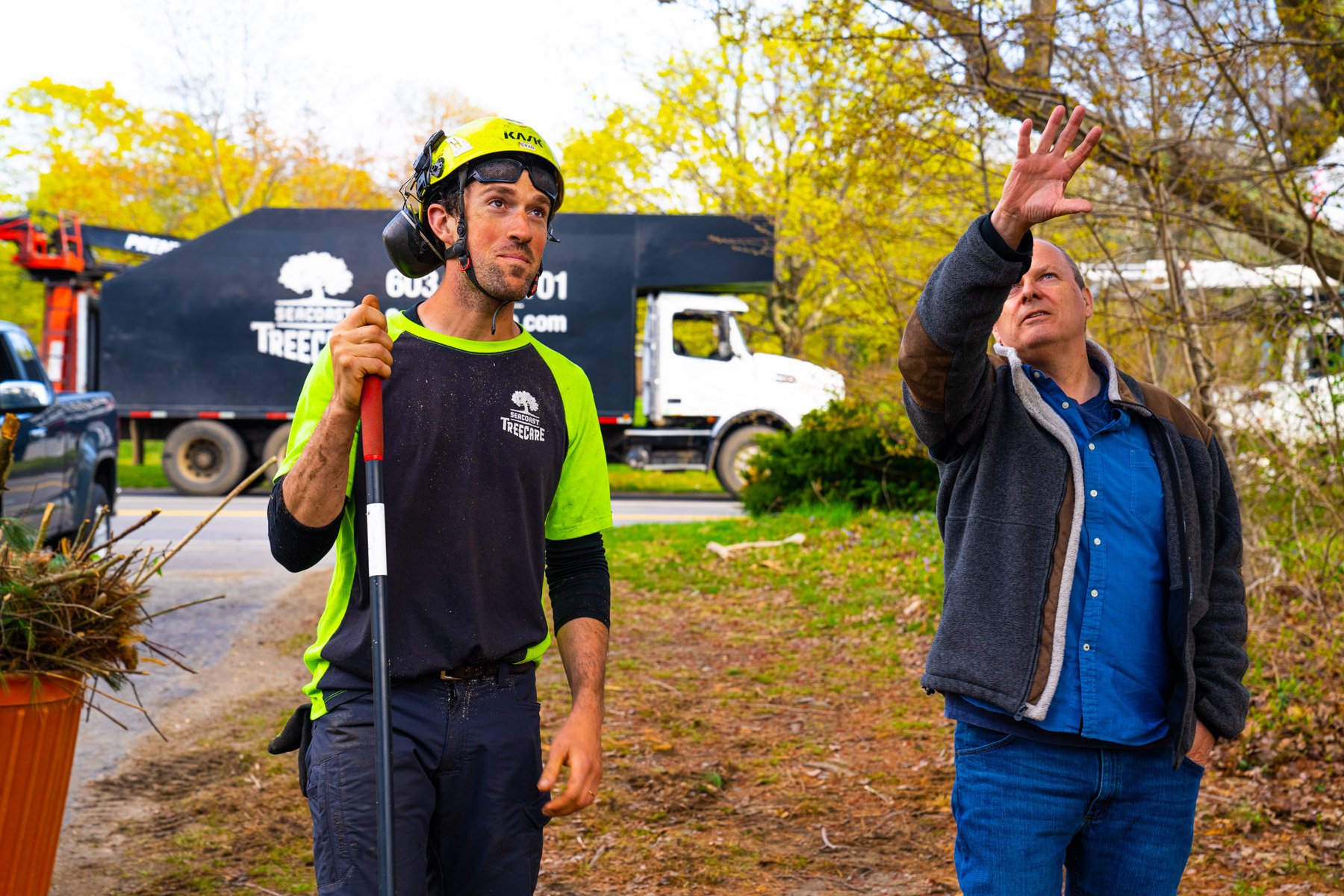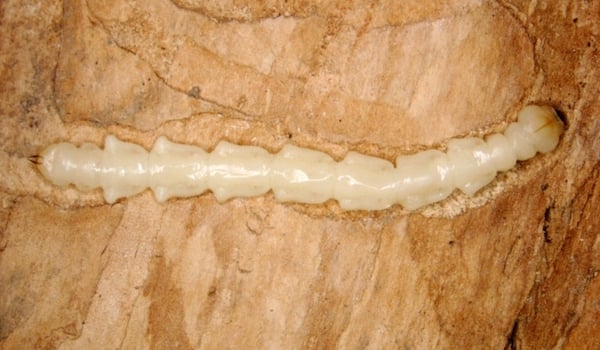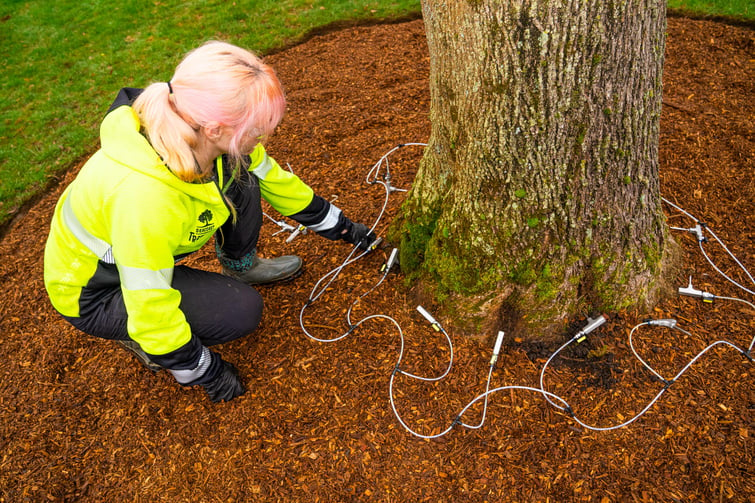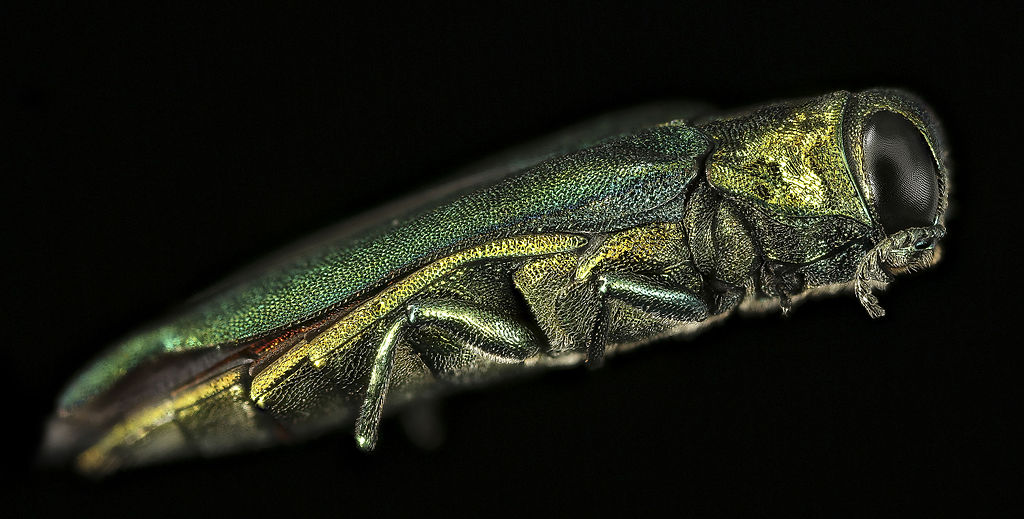
5 Things To Know About Emerald Ash Borer in New England
The Emerald Ash Borer (EAB) is a small, invasive beetle that has been devastating to Ash Trees in New England. This pest has been called the most “destructive exotic forest pest in North America” and for good reason. The EAB is responsible for the death of tens of millions of Ash Trees.
The Emerald Ash Borer in New England remains a significant threat and we often get a lot of questions about this pest. In this article, we’ll dive into some of the things that you ought to know about the EAB.
What to Know About the Emerald Ash Borer in New England
Here are a few important facts to know about this destructive pest.
#1: Humans Contribute to the EAB Spread
Although adult beetles move pretty slowly through the landscape (estimated at one mile per year), humans speed that up by moving infested firewood logs and nursery stock to uninfected areas.
#2: Emerald Ash Borer Signs Include D-Shaped Exit Holes and S-Shaped Tunnels
There are some very general signs that your tree might be under attack by a disease or a pest (like the EAB). These include canopy thinning and crown dieback. A tree that is infested with a pest, like the EAB, might also experience woodpecker damage as pests are a food source for woodpeckers.

But if you have an Ash Tree and it’s experiencing some of these signs and symptoms, you should take a closer look for more telltale evidence of Emerald Ash Borer damage.
EAB leave D-shaped exit holes when they emerge from Ash Trees. Trees attacked by EAB also exhibit S-shaped tunnels as the EAB moves beneath the bark. You might also notice bark splitting.
#3: An Aggressive, Proactive Approach is the Best Emerald Ash Borer Treatment
There’s recently been some research in regard to the cold weather killing the EAB. Research has shown that when temperatures drop to minus 20, around half of the EAB larvae wintering in Ash Trees will die.

While we have very cold New England temperatures, it rarely hits those negative temperatures for a long enough period of time to kill enough of the EAB population.
In reality, your best approach to Emerald Ash Borer treatment is specialized control. At Seacoast Tree Care, we use soil injections and/or bark sprays to address the EAB. It’s important to keep up with these treatments over time.
#4: The EAB is Now in 30 States
The Emerald Ash Borer in New England is obviously a problem, but we are not the only states to be dealing with this pest. The Emerald Ash Borer was first found in Detroit in 2002 and it has been spreading to other areas ever since. It was first found in Massachusetts 10 years later when it popped up in Dalton in 2012.

All 16 species of Ash Trees are at risk of this pest. It’s been found that it continues to spread through firewood, Ash wood products, Ashwood packing materials, Ashwood chips, and even Ashwood debris. The pest can spread even if no beetles are visible. Since the pest also lays its eggs in the wood, it often gets moved without realizing it’s infested.
#5: A Certified Arborist Can Help
If you have Ash Trees on your property, it’s worth investing in EAB treatment from professional tree care services. The sad truth is that it’s not a matter of IF the EAB will attack your Ash Trees but rather WHEN. They are simply that pervasive.
There is a timeline for tree preservation. As the EAB larvae feed on the vascular system of a tree and begin to inhibit it from getting nutrients, it quickly becomes a much more serious problem. At that point, the window for treatment begins to close. This is why it’s so important to be proactive.
While this is not good news for Ash Trees in New England, when you partner with a professional like Seacoast Tree Care, you can take important steps toward protecting your trees.
At Seacoast Tree Care in Southern NH, ME, and MA, we work with a team of highly skilled Certified Arborists who can not only perform thorough inspections but will also help guide you toward the best decisions toward hopefully saving your trees from this invasive species.
Ready for healthier trees at your Southern NH, ME, or MA home? Request your consultation and have your New England trees evaluated. By making a wise choice, you’ll know your trees are in good hands.
Image Source: emerald ash borer on wood, emerald ash borer bug


